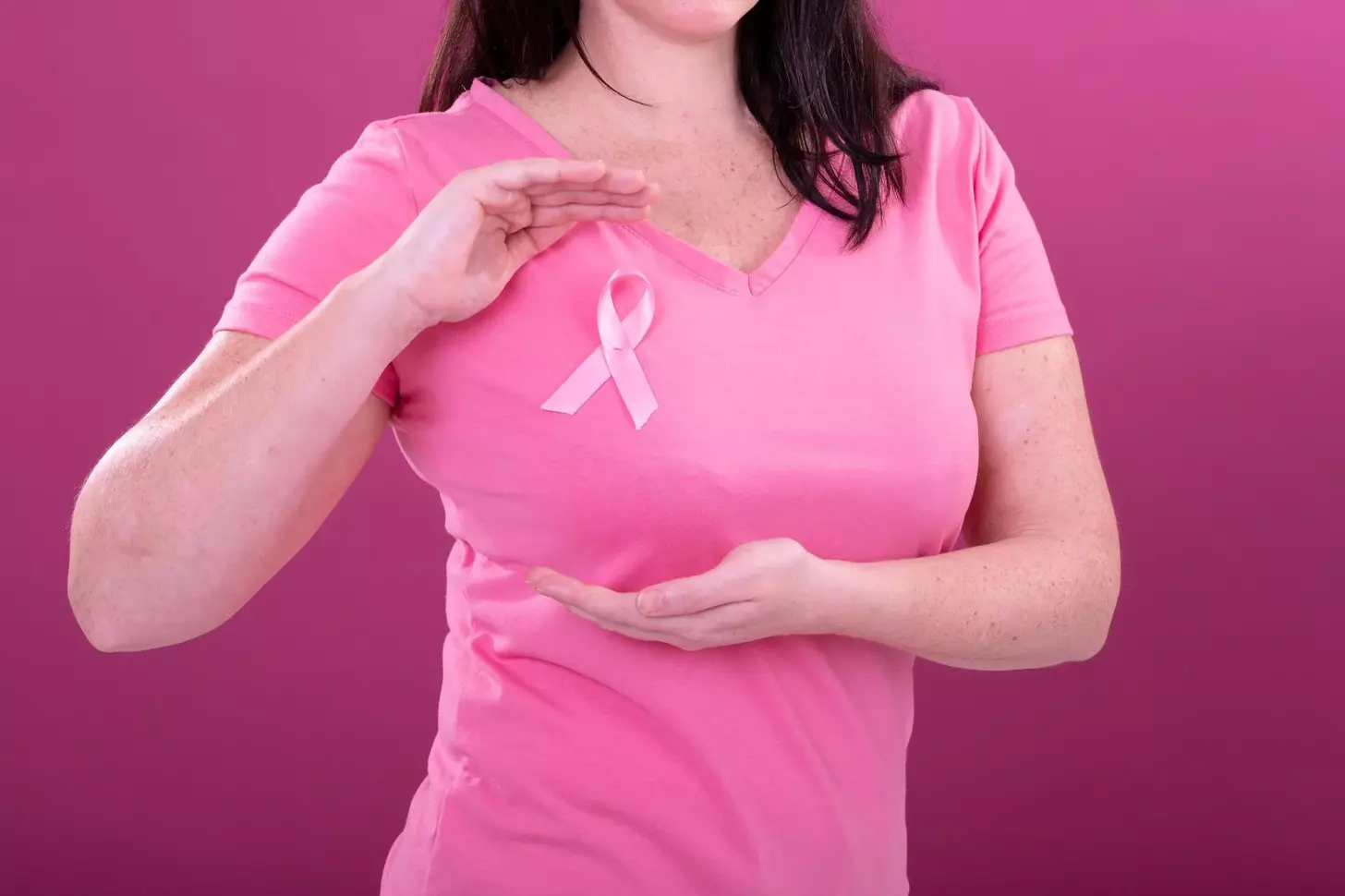Last Updated on November 27, 2025 by Bilal Hasdemir

When it comes to cancer treatment approaches, a full plan often includes more than the main treatment. Adjunctive therapy, or adjuvant therapy, is key in lowering cancer return risk and boosting long-term survival chances.
We’ll dive into adjunctive therapy and its big role in bettering patient results. We’ll look at five main parts of adjunctive therapy: systemic action, site-specific radiotherapy, hormone therapy, targeted drugs, and immunotherapy. Knowing these cancer treatment approaches helps patients make better care choices.
Key Takeaways
- Adjunctive therapy is given after primary treatment to lower cancer return risk.
- It boosts long-term survival rates for cancer patients.
- There are five main properties of adjunctive therapy.
- Understanding adjunctive therapy helps patients make informed choices.
- Adjunctive therapy is a vital part of complete cancer care.
What Is Adjunctive Therapy in Cancer Treatment?
Cancer treatment often uses many approaches, with adjunctive therapy playing a big role. It helps lower the chance of cancer coming back. This therapy is given after the main treatment to help prevent recurrence.
Definition and Purpose of Adjuvant Therapy
Adjuvant therapy is a treatment that helps after the main treatment. It aims to get rid of any cancer cells left behind. This therapy targets tiny cancer cells that surgery or other treatments might miss.
It’s used to improve patient outcomes and increase chances of long-term survival. A study in the Journal of Clinical Oncology found it boosts survival rates in many cancers.
“Adjuvant therapy is a critical component of cancer treatment, giving patients a better chance of survival by eliminating residual cancer cells.”
When Adjunctive Treatments Are Recommended
Doctors recommend adjunctive treatments based on the cancer type, stage, and patient’s health. It’s for patients who have had surgery, chemotherapy, or radiation and are at high risk of recurrence.
The choice of adjuvant therapy depends on many factors. These include the cancer’s genetic profile, the patient’s medical history, and the treatment’s benefits and risks. A team of healthcare professionals decides the best adjuvant therapy for each patient.
| Cancer Type | Common Adjuvant Therapies | Purpose |
|---|---|---|
| Breast Cancer | Chemotherapy, Hormone Therapy | Reduce recurrence risk |
| Colon Cancer | Chemotherapy | Kill remaining cancer cells |
| Lung Cancer | Chemotherapy, Radiation Therapy | Prevent local recurrence |
Understanding adjunctive therapy’s role in cancer treatment highlights its importance. It improves patient outcomes and lowers the risk of cancer coming back.
The Evolution and Importance of Cancer Adjunctive Therapies
Cancer treatment has changed a lot with the help of adjunctive therapies. These treatments add to main treatments like surgery, chemo, and radiation. They help patients get better results.
Historical Development of Adjuvant Approaches
Adjuvant therapy has been around for decades. At first, it was based on trial and error. But now, thanks to new research and tech, these treatments are more precise and effective.
Back in the mid-20th century, chemotherapy was first used to fight cancer. Today, we have many more treatments like hormone therapy, targeted therapy, and immunotherapy.
How Modern Adjunctive Therapies Improve Survival Rates
Today’s adjunctive therapies have greatly increased cancer survival rates. They target leftover cancer cells after main treatments. This lowers the chance of cancer coming back or spreading.
Studies show that adjuvant therapy can lead to higher cure rates in cancers like breast, colon, and lung. For example, adjuvant chemotherapy helps early-stage breast cancer patients live longer.
| Cancer Type | Adjuvant Therapy | Survival Rate Improvement |
|---|---|---|
| Breast Cancer | Chemotherapy, Hormone Therapy | Up to 30% increase in 5-year survival |
| Colon Cancer | Chemotherapy | 20-30% improvement in overall survival |
| Lung Cancer | Chemotherapy, Targeted Therapy | 15-25% increase in 5-year survival |
Adjunctive therapy offers many benefits, making cancer treatment more complete. As research keeps improving, we’ll see even better treatments for patients.
The 5 Different Properties of Adjunctive Therapy in Cancer
It’s important to know about adjunctive therapy’s properties for better cancer treatment plans. These therapies work alongside main treatments like surgery, chemotherapy, or radiation. They help make these treatments more effective.
Overview of Key Therapeutic Mechanisms
Adjunctive therapy has five main properties. These include systemic action through chemotherapy, site-specific radiotherapy, hormone therapy, targeted drugs, and immunotherapy. Each targets cancer cells in its own way.
Chemotherapy kills cancer cells all over the body. Radiotherapy sends radiation directly to tumors to protect healthy tissues. Hormone therapy treats cancers driven by hormones, like some breast and prostate cancers.
Targeted drugs aim at specific genetic mutations in cancer cells. Immunotherapy uses the body’s immune system to fight cancer.
How These Properties Complement Primary Treatment
These therapies add to primary treatments by tackling different cancer aspects. For example, chemotherapy kills cancer cells that have spread. Radiotherapy makes tumors smaller before surgery, making it easier to remove them.
Together, these therapies create a treatment plan that targets the main tumor and any spread. This helps lower the chance of cancer coming back.
Selecting the Right Combination of Properties
Choosing the right adjunctive therapies depends on many factors. These include the cancer type and stage, the patient’s health, and the tumor’s genetics. A team of healthcare experts works together to find the best treatment for each patient.
Understanding each therapy’s unique properties helps us choose the best combination for each patient. This way, we can get the best results for them.
Property 1: Systemic Action Through Chemotherapy
Chemotherapy is a big step forward in fighting cancer. It targets cancer cells all over the body. This makes it a key part of cancer treatment.
Targeting Cancer Cells Systemically
Chemotherapy uses drugs to kill cancer cells or stop them from growing. It’s given after surgery to get rid of any cancer cells that might have spread. This helps lower the chance of cancer coming back.
We pick different chemotherapy plans based on the cancer type and stage. These plans aim to help fight cancer while keeping side effects low.
Chemotherapy Protocols in Adjuvant Settings
Chemotherapy plans often mix different drugs given over time. The plan depends on the cancer, the patient’s health, and past treatments. For example, in breast cancer, treatments like AC-T are often used.
Success Rates in Various Cancers
Chemotherapy has greatly improved survival rates for many cancers, like breast, colon, and lung. Success rates change based on the cancer stage, type, and how well the patient responds to treatment.
| Cancer Type | Common Chemotherapy Protocols | Success Rates |
|---|---|---|
| Breast Cancer | AC-T, FEC-T | Improved survival by 10-20% |
| Colon Cancer | FOLFOX, CAPOX | Reduced recurrence by 30% |
| Lung Cancer | Platinum-based doublets | Increased survival by 15-25% |
These numbers show how chemotherapy helps in cancer treatment. It’s a big part of making treatment more effective.
Property 2: Site-Specific Radiotherapy for Local Control
We use site-specific radiotherapy to target cancer cells precisely. This method helps avoid damage to healthy tissue. It’s a key part of modern cancer treatment, helping control tumors well.
Precision Radiation Techniques in Modern Oncology
Modern oncology has made big strides in radiation therapy. Intensity-Modulated Radiation Therapy (IMRT) and Stereotactic Body Radiation Therapy (SBRT) are two key methods. IMRT changes the intensity of radiation beams to match the tumor’s shape. SBRT gives high doses of radiation in a few fractions, for high precision.
Preventing Local Recurrence After Surgery
One main goal of radiotherapy is to stop cancer from coming back after surgery. It kills any cancer cells left behind. This is very important when the surgery margins are close or positive.
Research shows that radiotherapy after surgery can improve control and survival. For example, in breast cancer, radiotherapy after lumpectomy can cut the risk of recurrence by up to 70%.
Balancing Efficacy and Side Effects
Radiotherapy is very effective, but we must consider its side effects. Modern methods try to protect healthy tissues, reducing side effects. But, side effects can happen, and managing them is key to patient care.
To show the impact of radiotherapy, let’s look at different cancer types:
| Cancer Type | Local Control Rate | Common Side Effects |
|---|---|---|
| Breast Cancer | 90% | Skin irritation, fatigue |
| Prostate Cancer | 85% | Urinary issues, bowel changes |
| Lung Cancer | 80% | Fatigue, esophagitis |
Understanding the benefits and side effects of site-specific radiotherapy helps us tailor treatments. This improves outcomes in cancer care for each patient.
Property 3: Hormone Therapy to Block Tumor-Promoting Hormones
Hormone therapy is key in treating cancers driven by hormones, like some breast and prostate cancers. It blocks the body’s natural hormones that cancer cells need to grow. This helps lower the chance of cancer coming back.
Mechanism of Action in Hormone-Responsive Cancers
Cancer cells in hormone-responsive cancers grow because of hormones like estrogen and testosterone. Hormone therapy either lowers these hormones or blocks their action on cancer cells. For example, in breast cancer, drugs like tamoxifen compete with estrogen for binding sites in breast tissue. This stops estrogen from helping cancer cells grow.
Key mechanisms of hormone therapy include:
- Reducing hormone production: Drugs like aromatase inhibitors lower estrogen levels in the body.
- Blocking hormone receptors: Anti-estrogens like tamoxifen prevent estrogen from binding to its receptor.
- Degrading hormone receptors: Some therapies accelerate the degradation of hormone receptors, further reducing the cancer cells’ ability to use hormones for growth.
Long-Term Hormone Therapy Approaches
The length of hormone therapy varies based on cancer type, stage, and treatment response. For some, it may last 5 to 10 years or more. Long-term therapy aims to balance cancer prevention with treatment side effects.
Benefits of long-term hormone therapy include:
- Significant reduction in cancer recurrence rates.
- Improved survival rates for patients with hormone receptor-positive cancers.
- Potential reduction in the risk of developing cancer in the contralateral breast or prostate.
Improving Five-Year Survival Rates
Hormone therapy greatly improves five-year survival rates in hormone-responsive cancers. It works with other treatments like surgery and chemotherapy for better outcomes.
| Cancer Type | Five-Year Survival Rate Without Hormone Therapy | Five-Year Survival Rate With Hormone Therapy |
|---|---|---|
| Breast Cancer (Stage II) | 70% | 85% |
| Prostate Cancer (Locally Advanced) | 80% | 90% |
Property 4: Targeted Drugs for Mutation-Driven Cancers
Targeted drugs have changed how we treat cancers caused by mutations. Now, we can use genetic profiles to create treatments that target specific cancer mutations. This makes treatment more personal and effective.
Precision Medicine in Adjunctive Cancer Care
Precision medicine has changed cancer treatment. It lets us give the right treatment to the right patient at the right time. Targeted therapies are key, targeting a tumor’s specific genetic weaknesses.
Genetic tests help find the best targeted therapy for a patient. This method boosts treatment success and cuts down on side effects.
Matching Genetic Profiles to Targeted Therapies
Matching genetic profiles to therapies involves detailed genetic testing. Next-generation sequencing (NGS) is a major tool for this. It lets us see a patient’s cancer’s genetic makeup.
After finding the cancer’s genetic drivers, we pick targeted therapies to block them. This personalized treatment is a big step forward in cancer care.
Case Studies of Successful Targeted Adjuvant Treatment
Many case studies show targeted therapies work well in adjuvant treatment. For instance, HER2-positive breast cancer patients do better with treatments like trastuzumab.
In non-small cell lung cancer (NSCLC), therapies targeting EGFR mutations have greatly improved survival. These examples highlight the power of targeted drugs in improving cancer treatment.
Property 5: Immunotherapy Leveraging the Immune System
Immunotherapy is a key part of cancer treatment. It uses the body’s immune system to fight cancer. This method is promising in the fight against cancer.
Harnessing Natural Defenses Against Residual Cancer Cells
Immunotherapy boosts the body’s immune response against cancer. Checkpoint inhibitors are a type of immunotherapy that has shown great promise. They help the immune system attack cancer cells more effectively.
The immune system can naturally fight cancer cells. But, cancer cells can hide from it. Immunotherapy helps the immune system find and attack these cells.
Checkpoint Inhibitors and Other Immunotherapy Approaches
There are different types of immunotherapy. Checkpoint inhibitors are just one example. Other methods include:
- CAR-T cell therapy: This involves modifying T cells to recognize cancer cells and then reinfusing them.
- Cancer vaccines: These vaccines help the immune system recognize and attack cancer cells.
- Monoclonal antibodies: These proteins target specific proteins on cancer cells, helping the immune system destroy them.
These methods have shown success in various cancers. For example, a study in Journal for ImmunoTherapy of Cancer found combining different immunotherapies can improve treatment results.
Emerging Research and Future Directions
Immunotherapy is constantly evolving. New research is exploring combining it with other treatments. Personalized immunotherapy is also an area of focus.
As we learn more about the immune system and cancer, we’ll see better immunotherapy options. The combination of adjunctive therapies, including immunotherapy, with traditional treatments will be key in improving cancer care.
Evidence-Based Patient Selection for Optimal Outcomes
Choosing the right patients for adjunctive therapy for cancer patients is key. We look at each patient’s unique needs to find the best treatments.
Risk Assessment Frameworks in Clinical Practice
Risk assessment tools are vital in healthcare. They help us sort patients by their risk of cancer coming back. These tools look at the tumor, the patient’s health, and genetic markers.
In breast cancer, the Oncotype DX test shows if chemotherapy will help. This helps us tailor treatments to each patient. It ensures they get the best care for their situation.
Multidisciplinary Tumor Boards and Treatment Planning
Multidisciplinary tumor boards are key. They bring together experts to plan treatments. This ensures all aspects of a patient’s care are considered.
Working with surgeons, oncologists, and others, we create detailed plans. These plans use the best therapeutic benefits of adjunctive therapy. This teamwork improves patient care and outcomes.
A recent roundtable at the TME Fall Summit showed advances in cryoablation for breast cancer. IceCure’s Prosense was highlighted. Such discussions are vital for staying current with treatments and the value of teamwork.
Balancing Benefits Against Possible Side Effects
Choosing patients for adjunctive therapy means weighing benefits and risks. We look at the patient’s health, cancer type, and how treatment might affect their life quality.
| Treatment Modality | Potential Benefits | Potential Side Effects |
|---|---|---|
| Chemotherapy | Reduces risk of recurrence, improves survival | Nausea, hair loss, fatigue |
| Radiation Therapy | Local control of tumor, reduces recurrence risk | Skin reactions, fatigue, long-term effects |
| Hormone Therapy | Reduces risk of recurrence in hormone-sensitive cancers | Hot flashes, mood changes, bone density impact |
By carefully considering these factors, we make choices that help patients. This leads to better outcomes and quality of life.
Conclusion: Advancing Cancer Care Through Comprehensives Adjunctive Approaches
Throughout this article, we’ve seen how adjunctive therapy in cancer is key to better treatment results. We’ve looked at various therapies like chemotherapy, radiotherapy, hormone therapy, targeted drugs, and immunotherapy. This shows the importance of integrative medicine in cancer care.
At Liv Hospital, we use the latest academic protocols and team care to offer top-notch healthcare. Our method combines adjunctive therapies with traditional cancer treatments. This ensures patients get care that fits their unique needs.
By using different adjunctive therapies, we can make treatments more effective. This helps lower the chance of cancer coming back and improves patients’ lives. As cancer treatment keeps getting better, it’s vital to keep up with new adjunctive therapies and their role in treating cancer.
FAQ
What is adjunctive therapy in cancer treatment?
Adjunctive therapy is extra treatment used with main treatments like surgery. It helps stop cancer from coming back and makes patients do better.
How do different properties of adjunctive therapy work together?
Adjunctive therapy has five main parts. These are chemotherapy, radiotherapy, hormone therapy, targeted drugs, and immunotherapy. They all work together to fight cancer in different ways. This helps patients live longer.
What is the role of chemotherapy in adjunctive therapy?
Chemotherapy attacks cancer cells all over the body. It kills any cancer cells that might have spread. This lowers the chance of cancer coming back.
How does hormone therapy work in adjunctive cancer care?
Hormone therapy stops cancer cells from growing by blocking certain hormones. This helps patients with hormone-sensitive cancers live longer.
What is the significance of targeted drugs in adjunctive therapy?
Targeted drugs focus on specific genetic changes that cause cancer. They offer a precise way to treat patients with these changes.
How does immunotherapy leverage the immune system in cancer treatment?
Immunotherapy uses the body’s immune system to fight cancer cells. It uses special treatments to help the immune system find and attack cancer cells better.
Why is evidence-based patient selection important in adjunctive therapy?
Choosing the right treatment for each patient is key. It makes sure patients get the best treatment for their cancer and genetic makeup. This helps them get the most benefits with fewer side effects.
How do multidisciplinary tumor boards contribute to treatment planning?
Tumor boards bring together doctors from different fields to talk about patient cases. They create detailed treatment plans that use all parts of adjunctive therapy. This helps patients get the best care possible.
What is the importance of balancing benefits against possible side effects in adjunctive therapy?
It’s important to weigh the good against the bad in adjunctive therapy. This makes sure patients get effective treatment without too much harm. It helps keep their quality of life good.
How do integrative medicine approaches contribute to cancer care?
Integrative medicine combines traditional treatments with natural therapies. It can make patients feel better, reduce side effects, and improve their overall care.
What is the role of Liv Hospital in providing world-class healthcare for international patients?
Liv Hospital offers top-notch medical care, including adjunctive therapies, to patients from around the world. They support patients’ cancer care with expert doctors and modern facilities.
References
JAMA Network / JAMA Oncology — https://jamanetwork.com/journals/jamaoncology
Wikipedia — Adjuvant therapy — https://en.wikipedia.org/wiki/Adjuvant_therapy
OncoLink — Adjuvant Therapy (Overview) — https://www.oncolink.org/cancer-treatment/cancer-medications/overview/adjuvant-therapy







